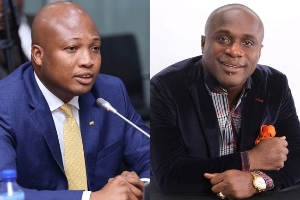The ratio of debt service expenditure to government’s total revenue and grants in 2019 is projected to hit 51.2 percent, increasing by 24.4 percentage points from a ratio of 26.8 percent in 2013. This means that for the first time in nearly two decades, debt servicing is taking away more than half of total public revenues.
Debt service expenditure, which comprises interest and amortization payments, absorbed 26.8 percent of total revenue and grants in 2013, but this increased rapidly to 47.9 percent in 2016. The ratio then fell to 44.5 percent in 2017 and to 44.3 percent in 2018.
This exposes the sheer depth of Ghana’s public indebtedness which successive administrations have sought to mask by using the far less revealing ratio of public debt to Gross Domestic Debt to measure the country’s debt sustainability.
The Institute for Fiscal Studies (IFS) in its review of the 2019 mid-year budget, notes that, the burden of debt service expenditure on the government’s finances is very high and increasing, even if the debt-to-GDP ratio is now lower because of the GDP rebasing and recalculation.
At the press briefing on Tuesday in Accra, a Fellow at the Institute, Mr. Leslie Dwight Mensah said, “this calls for urgent steps to limit further borrowing.”
“It is also crucial to eliminate extra-budgetary expenditures and borrowing, which despite their being excluded from the budget deficit and, in some cases, the debt stock, still create debt service liabilities that must be met from the same limited revenue envelope available to the government,” Mensah further stated.
The GHc 12 billion borrowed by government to issue resolution bonds to bridge the capital deficits churned up by the nine liquidated indigenous banks since August 2017 is the biggest example of this; although the cost has been added to the public debt it has not been added to the fiscal deficit in any year on the basis that it was to solve a one-off problem.
Relative to the original 2019 budget statement, government borrowing is set to rise on the back of the mid-year supplementary expenditure request.
The budget deficit is projected to increase by GHc 1.2 billion as well as the debt amortization spending by GHc 5.2 billion, to pay off crystallized energy sector contingent liabilities, in the face of an unchanged total revenue projections.
The total supplementary request which is to be funded by debt, will further increase the debt stock, which had hit GHc 203.9 billion in June 2019, and the debt-to-GDP ratio, which reached 59.2 percent in the period.
Government Debt Strategy
Nevertheless, the 2019-2022 Medium Term Debt Strategy (MTDS) envisages an increase in the issuance of medium to long-term bonds on the domestic bond market over the strategy period. This year though domestic debt issuances have been front loaded and will be less during the second half of the year than they were during the first half.
For the first time, the strategy envisages the issuance of a 20-year domestic bond in August 2019. This will be the first time that Ghana is issuing a 20-year bond, and would be the longest tenure domestic bond to date.
This is aimed at diversifying the instrument base and providing suitable options with which institutions like the pension and insurance companies can match their assets to their liabilities.
The strategy also envisions the issuance of a sovereign bond with proceeds to be used for liability management and budget support.
Business News of Wednesday, 7 August 2019
Source: goldstreetbusiness.com

















